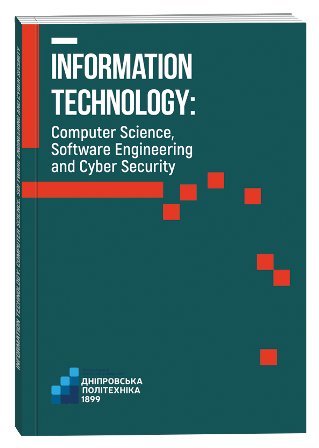NEURAL NETWORK IDENTIFICATION OF PROPAGANDA GOALS IN TEXT CONTENT WITH VISUAL ANALYTICS OF RESULTS
DOI:
https://doi.org/10.32782/IT/2024-4-17Keywords:
propaganda, propaganda goals, text content, visual analytics.Abstract
The work aim is to create a method for neural network identification of propaganda goals in text content with visual analytics of the results, which should include expanding the set of propaganda goals and using context windows to analyze the relationships between propaganda techniques and goals. Methodology. The developed method involves analyzing text content using neural networks, which allows identifying propaganda goals and techniques. Context windows are used to assess the relationships between propaganda techniques and goals. The results are presented in the form of visualization of the semantic model of propaganda, which includes assessing the semantic significance and importance of relationships. Scientific novelty. The main difference of the proposed method is the expansion of the set of propaganda goals by supplementing the set of their verbal variants. The introduction of context windows to analyze the relationships between propaganda techniques and goals allows to increase the accuracy of propaganda detection and provide a visual display of the results. Conclusions. Experimental results confirmed the effectiveness of the developed method, which demonstrates improved detection of propaganda targets compared to existing approaches. High correlation with expert assessments confirms the reliability and accuracy of the approach. Visual analytics provides transparency and explainability of the results, which contributes to a deeper understanding of the mechanisms of propaganda influence. The method has significant potential for use in automatic analysis of text content and can be adapted for various text sources.
References
Nazarov V., Molchanova M. Information System for Detecting Abusive Speech in Audio Content by Means of Natural Language. Proceedings of V International Scientific and Practical Conference «Modern strategies of global scientific solutions». Stockholm, Sweden: International Scientific Unity, 2023. С. 132–135
Молчанова М. О., Мазурець О. В., Собко О. В. Віт Р. В., Назаров, В. В. Алгоритм виявлення аб’юзивного вмісту в україномовному аудіоконтенті для імплементації в об’єктно-орієнтовану інформаційну систему. Вісник Хмельницького національного університету. Технічні науки. 2024. № 1 (331). С. 101–106.
Молчанова М. О., Залуцька О. О., Бармак О. В. Метод інтелектуального аналізу тональності текстів. Матеріали XII Всеукраїнської науково-практичної конференції «Глушковські читання». Київ, 2023. С. 113–116
Krak I., Zalutska O., Molchanova M., Mazurets O., Bahrii R., Sobko O., Barmak O. Abusive Speech Detection Method for Ukrainian Language Used Recurrent Neural Network. CEUR Workshop Proceedings. 2024. Vol. 3688. С. 16–28.
Zalutska O., Molchanova M., Sobko O., Mazurets O., Pasichnyk O., Barmak O., Krak I. Method for Sentiment Analysis of Ukrainian-Language Reviews in E-Commerce Using RoBERTa Neural Network. CEUR Workshop Proceedings. 2023. Vol. 3387. С. 344–356
Ahmad P. N., Yuanchao L., Aurangzeb K., Anwar M. S., Haq Q. M. U. Semantic web-based propaganda text detection from social media using meta-learning. Service Oriented Computing and Applications. 2024. С. 1–15.
Rodríguez-García R., Centeno R., Rodrigo Á. Together we can do it! A roadmap to effectively tackle propaganda-related tasks. Internet Research. 2024
Szwoch J., Staszkow M., Rzepka R., Araki K. Limitations of Large Language Models in Propaganda Detection Task. Applied Sciences. 2024. Т. 14, № 10. С. 4330
Krak I., Molchanova M., Mazurets O., Sobko O., Zalutska O., Barmak O. Method for Neural Network Detecting Propaganda Techniques by Markers With Visual Analytic. CEUR Workshop Proceedings. 2024. Vol. 3790. С. 158–170.
Yoosuf S., Yang Y. Fine-Grained Propaganda Detection with Fine-Tuned BERT. Proceedings of the Second Workshop on Natural Language Processing for Internet Freedom: Censorship, Disinformation, and Propaganda. Hong Kong, China, 2019. С. 87–91.
Propaganda Analysis Project. URL: https://propaganda.math.unipd.it/index.html. Дата звернення (20.11.2024)/
Zenodo. Propaganda. Proppy Corpus 1.0. URL: https://zenodo.org/records/3271522#.XS6qRUUzau4. Дата звернення (20.11.2024)







